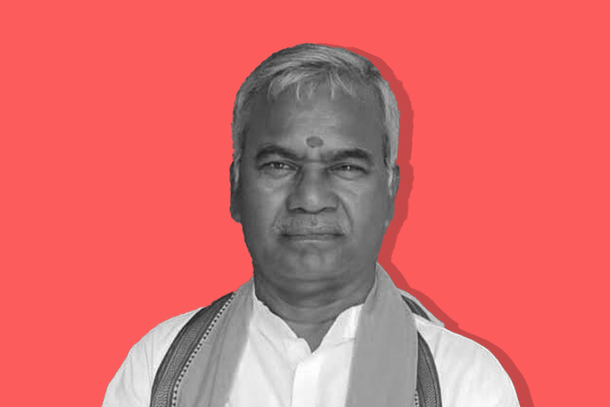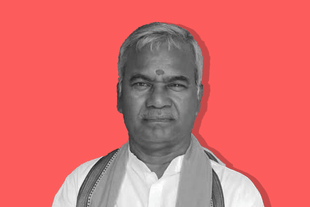Politics
Obituary: Shri Rama Bhakta, Kameshwar Chaupal (1956-2025)
Aravindan Neelakandan
Feb 08, 2025, 05:49 PM | Updated Feb 11, 2025, 01:09 PM IST
Save & read from anywhere!
Bookmark stories for easy access on any device or the Swarajya app.


Mangal Pandey did not live to see August 1947. Rana Pratap did not live to see the bhagwa dhwaj arise from the forts of Hindavi Swarajya. Theodore Herzl never lived to see the nation of Israel. Great pioneers of freedom and liberty of their people mostly never live to see their dreams come true.
Not Kameshwar Chaupal.
It was 9 November, 1989. In the vicinity of the disputed structure built atop Shri Ram Janmabhoomi in Ayodhya, Hindus were granted permission by the court to conduct a symbolic pooja involving bricks gathered from across the nation.
As Vedic pandits chanted the mantras of the rishis of Sindhu and Saraswati, the sacred brick that would for ever change the history of India and usher in a valiant saga of civilisational struggle was there on the sacred pedestal. It was to be placed as per rituals and that would mark the start of Shri Ram Janmabhoomi movement.
Ashok Singhal, who was the General Secretary of Viswa Hindu Parishad asked: 'Where is Kameshwar?'
Kameshwar Chaupal was the Ram bhakta tasked with placing that sacred brick. He hailed from Bihar and was from a Scheduled Community.
Working as a full-time Sangh Parivar worker, Chaupal knew the disease called casteism and believed that the spiritual wave of Shri Ram Janmabhoomi movement would cleanse away all forms of birth-based discriminations. But little did he know that he would become the very first astra or the divine arrow of Shri Rama in that battle for civilisational glory.
He was requested by Ashok Singhal to place the first brick of Shri Ram Janmabhoomi temple - a deed for which every pious Hindu yearned in his or her heart.
The power of that brick reverberated through caste-ridden rural Bihar where Chaupal was invited by the so-called 'upper caste' landlords to be seated in a throne-like seat as the landlord's family members washed his feet with reverence.
Shri Ram Janmabhoomi temple and the emancipation of socially oppressed sections of the society became the two missions of life for Kameshwar Chaupal.
He also served as a member of the Legislative Council of Bihar from 2002 to 2014, and was also a trustee of Shri Ram Janmabhoomi Teerth Kshetra Trust.
He thus commenced the battle for the liberation of Shri Rama's janmabhoomi and participated in it with full involvement and saw the removal of the structure of occupation. Then after decades of patient and painful waiting, he finally saw the the magnificent temple rise.
Kameshwar Chaupal's life has been his message in the sense that he wanted not just symbolic momentary victories but sustained social transformations. In his interviews he had expressed his vision of a Hindu society that is vibrant and healthy without the internal fault-lines which forces inimical to India and its culture always try to exploit.
In his passing, Hindu society has lost a guide and a warrior. But in his sacred memory, Hindu society has an eternal inspiration and a reminder. We need to build a strong, united, healthy and just Hindu society whose spiritual and civilisational unity cannot be divided by caste, cannot be divided by polities, cannot be divided by languages and regions.
Building such a Hindu society is making the entire Hindu society a temple for Shri Rama. Building that Ram Mandir and protecting it for all the ages to come shall be the befitting tribute to Shri Rama bhakta, Kameshwar Chaupal.





